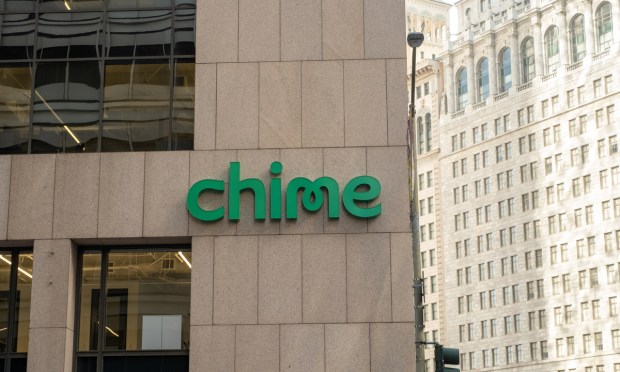
As they say in horse racing and on Wall Street: You pays your money and you takes your choice.
The news that Chime Financial is mulling an initial public offering next year means some is mulling in store for investors. They might be well-served in pondering some of the key questions that surround just what they’re getting when they buy into the evolving neobank model that looks to springboard from card use into investment accounts and other offerings.
Because the company has not filed documentation with the Securities and Exchange Commission, the exact metrics of the business — subscriber counts, revenues, etc. — are gleaned from a variety of sites. Forbes noted, for example, that as of the middle of last year, the company had more than 38 million customers, which is more than firms like SoFi, and the latest tally represents a threefold leap from 2021’s levels.
Chime details on its website that banking services are provided by banking partners such as The Bancorp Bank and Stride Bank, and those financial institutions also issue the credit and debit cards that are used by Chime’s members (as, for instance, with the Chime Visa Debit Card). Chime noted that it makes money by consistent debit transaction volume among its members.
“Most of Chime’s income is from Visa,” said the company on its site.
Interchange fees are in flux and in the news. Visa and Mastercard announced Tuesday (March 26) that they will reduce interchange rates slightly, by about 0.05%, through the next few years in the United States. The rates will be capped for five years.
Separately, Monzo’s earnings results, detailed in its latest annual report, showed that the company has been profitable on an operating basis. The bulk of income comes from transaction income, which includes interchange fees, and this line item represented 75% of the firm’s commission and fee income logged in the latest reported year.
Monzo reported that transaction income increased as card spend was up 38% year on year. Marketing costs, which might be viewed as a proxy for customer acquisition and retention costs, surged by 18 million pounds (about $23 million) in the most recent year, up from more than 3 million pounds (about $4 million) in the previous year.
Starling Bank, in its own earnings results, showed that total transactions were up 38% in the most recent annual period, as 12% of that value of 143 billion pounds (about $181 billion) was derived through card spending.
Chime, Monzo and Starling stand out in the neobank sector, as they achieved profitability and as valuation rounds point to what might be a sanguine outlook for those players. Monzo was valued at about $5 billion in a funding round this month, which was the valuation it was reportedly seeking.
However, there are still some cross-currents and headwinds that suggest that sustained profitability may be a challenge in a sector where, among dozens of players, only a reputed 5% have seen black ink on the operating line. Neobanks have been targeted for push payment fraud.
Separately, PYMNTS Intelligence estimated that 9% of consumers use FinTechs as their primary bank, and 47% of consumers said they are hesitant to use these digital-only players.